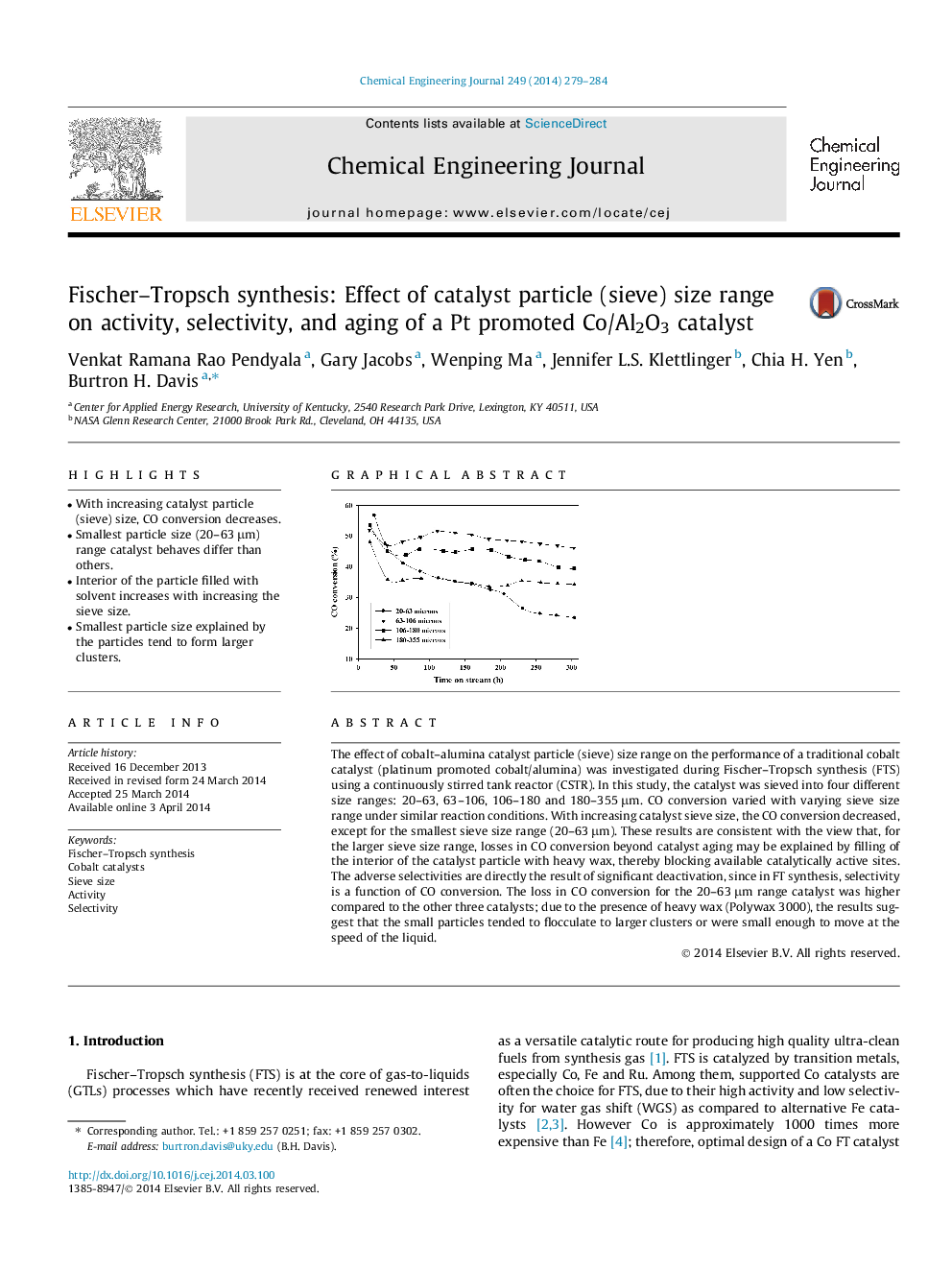| کد مقاله | کد نشریه | سال انتشار | مقاله انگلیسی | نسخه تمام متن |
|---|---|---|---|---|
| 147420 | 456392 | 2014 | 6 صفحه PDF | دانلود رایگان |

• With increasing catalyst particle (sieve) size, CO conversion decreases.
• Smallest particle size (20–63 μm) range catalyst behaves differ than others.
• Interior of the particle filled with solvent increases with increasing the sieve size.
• Smallest particle size explained by the particles tend to form larger clusters.
The effect of cobalt–alumina catalyst particle (sieve) size range on the performance of a traditional cobalt catalyst (platinum promoted cobalt/alumina) was investigated during Fischer–Tropsch synthesis (FTS) using a continuously stirred tank reactor (CSTR). In this study, the catalyst was sieved into four different size ranges: 20–63, 63–106, 106–180 and 180–355 μm. CO conversion varied with varying sieve size range under similar reaction conditions. With increasing catalyst sieve size, the CO conversion decreased, except for the smallest sieve size range (20–63 μm). These results are consistent with the view that, for the larger sieve size range, losses in CO conversion beyond catalyst aging may be explained by filling of the interior of the catalyst particle with heavy wax, thereby blocking available catalytically active sites. The adverse selectivities are directly the result of significant deactivation, since in FT synthesis, selectivity is a function of CO conversion. The loss in CO conversion for the 20–63 μm range catalyst was higher compared to the other three catalysts; due to the presence of heavy wax (Polywax 3000), the results suggest that the small particles tended to flocculate to larger clusters or were small enough to move at the speed of the liquid.
Figure optionsDownload as PowerPoint slide
Journal: Chemical Engineering Journal - Volume 249, 1 August 2014, Pages 279–284